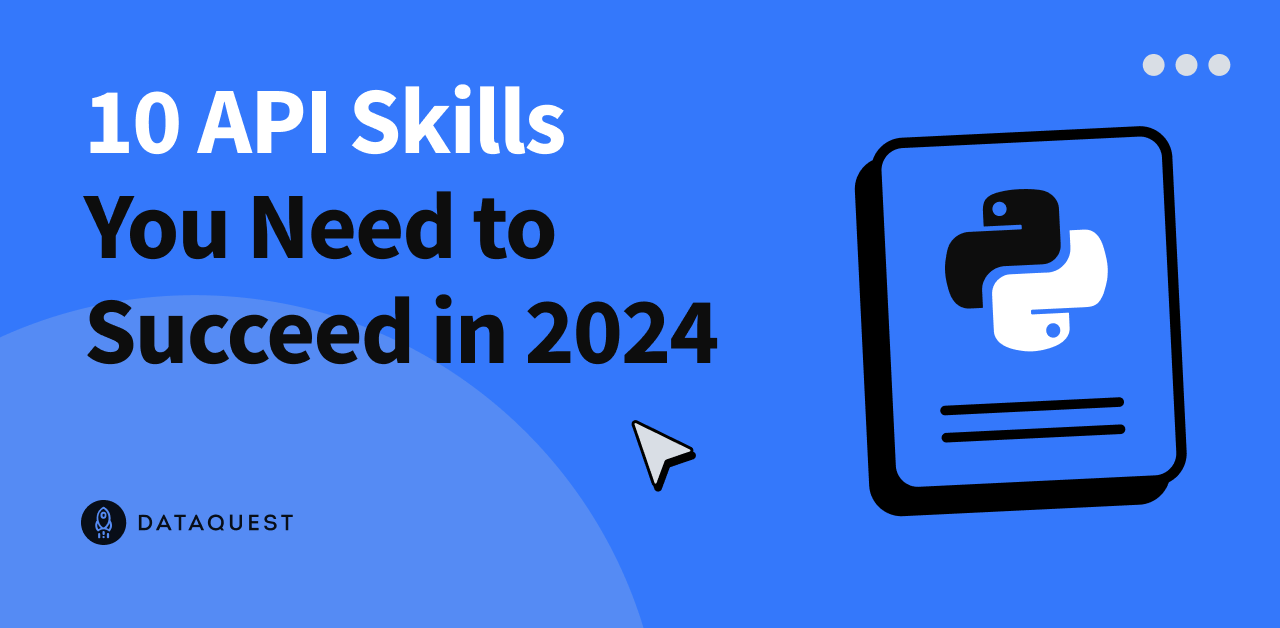In the current job market, understanding how to use SQL can significantly boost your career prospects. A recent StackOverflow survey of 90,000 developers revealed that SQL ranks as the fourth most popular programming language. Even as AI impacts the industry, SQL’s widespread use makes it a must-have for entering data fields. This post focuses specifically on skills for reading and querying data with SQL, which is a valuable asset for those looking to break into the data industry or advance their career. The goal is to educate you about key SQL concepts, showcase practical applications, and inspire you to start learning with resources like Dataquest’s SQL Fundamentals skill path.
Why You Need to Learn SQL Skills in 2024
SQL skills are the bread and butter for making data-driven decisions and managing the massive amounts of data generated in today’s workplaces. In 2024, SQL proficiency will continue to be critical for both launching a career in data and advancing in many industries. Consider these key insights:
– SQL is the most in-demand technical skill for data jobs.
– The SQL market is projected to grow to over $9 billion by 2025.
Beyond technical benefits, organizations see SQL mastery as a strategic asset. Professionals who can extract clear insights from complex data and communicate them effectively are highly valued. Whether you’re a student looking to break into data or an experienced pro upskilling to get ahead, SQL is a must-have. Dataquest’s SQL Fundamentals skill path provides a practical way to build job-ready SQL skills for the data-driven future.
Top 10 SQL Skills You Need to Succeed in 2024
To help you navigate the world of SQL and become a data-driven professional, we’ve identified the top 10 skills you need to master:
– SELECT
– Aggregate functions
– GROUP BY
– Data Filtering and Sorting Techniques
– JOIN
– Data Subqueries
– CTEs
– WINDOW FUNCTIONS
– Differences between dialects
– Working locally and in the cloud
By understanding these ten SQL skills, you’ll be well-equipped to excel in the data-driven job market of 2024 and beyond. In the following sections, we’ll take a deeper look at each of these key skills, providing practical examples and insights to help you develop a robust SQL skillset.
1. SELECT
The SELECT statement in SQL allows you to retrieve data from a database. One key decision when using SELECT is whether to get all columns using the wildcard (*) or only specific ones. This choice impacts both database performance and data security. Selecting All Columns: Useful for initial data exploration Provides a broad view of the data May slow down queries with large datasets Selecting Specific Columns: Improves query performance Retrieves only relevant data Helps protect sensitive information In most professional scenarios, selecting specific columns is best practice because it optimizes system resources and aligns with data privacy principles. However, there are situations where selecting all columns is appropriate, such as when conducting preliminary analyses. Using SELECT also involves learning how to choose the right columns for different queries, and understanding the performance implications of each approach. Dataquest’s Introduction to SQL and Databases course discusses into these topics, providing hands-on practice to build your proficiency. As AI advances, core SQL skills like effective SELECT statements remain essential for data professionals.
Back to Top 10 SQL Skills
2. Aggregate Functions
Being fluent in SQL’s aggregate functions is incredibly important for efficiently analyzing and summarizing large datasets. These functions are:
– SUM: Calculates the total of numerical values in a column
– AVG: Determines the average (mean) of numerical values
– MIN and MAX: Identify the smallest and largest values, respectively
– COUNT: Tallies the number of rows meeting a specific criteria
Aggregate functions have broad applications across industries. For example, a sales manager might use SUM to calculate total revenue, AVG to determine average order size, and COUNT to track daily transactions. Proficiency in these functions enhances analytical capabilities and improves overall query performance. While learning syntax and use cases can be challenging initially, knowing how to use these functions to answer business questions is important for anyone looking to learn SQL. Dataquest’s Summarizing Data in SQL course provides real-world applications to help you understand how these functions can apply to the real world.
Back to Top 10 SQL Skills
3. GROUP BY
The GROUP BY clause is a fundamental SQL skill for organizing and analyzing data. It groups rows with the same values in specified columns, enabling summary reports like:
– Totaling daily sales by date
– Counting orders per customer
– Segmenting data by product category
Correctly using the GROUP BY clause requires practice, especially when combining it with other SQL functions like JOINs or filtering data. Start with basic queries before progressing to more complex analyses using multiple grouping columns. Investing time to thoroughly understand this concept opens doors for you to extract valuable insights from raw data.
Back to Top 10 SQL Skills
4. Data Filtering and Sorting Techniques
To efficiently analyze data and advance your career, you must understand key SQL filtering and sorting techniques:
– WHERE: Filters records based on conditions
– HAVING: Filters aggregated records from GROUP BY
– ORDER BY: Sorts results ascending or descending
– LIKE: Matches a specified pattern
– IN: Checks against a list of values
– BETWEEN: Selects values within a range
– DISTINCT: Returns unique values
– LIMIT: Restricts the number of returned rows
Practical Applications and Benefits
Data professionals use these techniques to extract insights from large datasets. For example, marketers apply WHERE to target corporate customers and ORDER BY to identify top-performing customers. Mastering these skills helps you quickly locate key information, making you invaluable in data analysis and business intelligence roles. Overcoming Challenges
One of the most common hurdles people have with SQL filtering is knowing when to use HAVING vs. WHERE because their purpose seems similar on the surface. To help remember the difference, think of WHERE as filtering individual records, while HAVING filters aggregated groups. Hands-on practice with sample datasets is invaluable for solidifying this distinction.
Back to Top 10 SQL Skills
5. JOIN Data
SQL JOIN clauses combine rows from two or more tables based on a related column. There are several different types of JOIN in SQL, and knowing when and how to correctly utilize them is where the true power of working with SQL with relational databases starts to shine. INNER JOINs return records with matching values in both tables, while LEFT and RIGHT JOINs include all records from one table and only matching records from the other. FULL JOINs combine the results of LEFT and RIGHT JOINs, and CROSS JOINs generate the Cartesian product of the tables involved. Each type has specific use cases, such as ensuring data completeness or generating specific combinations. Learning JOINs for Career Growth
Proficiency in JOIN operations boosts your job prospects in data-driven industries because it allows you to work effectively with complex databases, optimize query performance, and perform advanced analyses. JOINs are often challenging for students starting out with SQL because the different JOIN types can seem confusing. It’s helpful to keep an example of each type handy so you can reference them when you need to determine the best type to use. To help with this, Dataquest’s Combining Tables in SQL course provides hands-on practice with real-world applications for all the different JOIN types.
Back to Top 10 SQL Skills
6. Subqueries
Subqueries are valuable for writing flexible SQL queries and retrieving complex data in a single query. They enable advanced data manipulation, making them a valuable skill for data-focused careers. Subqueries, also known as nested queries, are SQL queries placed within another query. They let you perform multi-step data operations that would otherwise require multiple queries. Subqueries are commonly used to:
– Identify records that do not match across tables
– Aggregate data before applying filter conditions
– Create temporary result sets for further analysis
Proficiency in subqueries can advance your career by demonstrating the ability to efficiently work with complex datasets. Even as AI transforms SQL applications, fundamental skills like subqueries will remain important. Focusing your learning on concepts core to querying data will keep your knowledge relevant even as technology evolves.
Back to Top 10 SQL Skills
7. Common Table Expressions (CTEs)
Common Table Expressions (CTEs) are named temporary result sets within an SQL…
Source link























